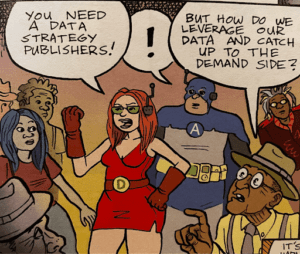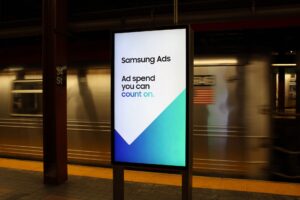 “Data-Driven Thinking” is written by members of the media community and contains fresh ideas on the digital revolution in media.
“Data-Driven Thinking” is written by members of the media community and contains fresh ideas on the digital revolution in media.
Today’s column is written by Eli Portnoy, president at Thinknear by Telenav.
Much has been written about the things marketers should consider when rolling out a digital ad campaign.
Some brands and products, such as Coca-Cola, Kleenex and Walmart, are so ubiquitous that marketers assume rich targeting is not necessary and that accurate data is not a concern. But in most cases, these “branding” campaigns could be more effective by pairing a targeting strategy with data to foster deeper engagement and create better user experiences. Targeting isn’t just about whom to send an ad to; it’s also what to say in the ad.
In order to implement an effective digital campaign that takes advantage of the unique aspects of digital, it’s essential to have both a solid data strategy and a solid targeting strategy behind it.
While opportunities in online and mobile advertising are virtually limitless, the difficult task is figuring out how best to connect with consumers. But there are many ways that traditional brand advertisers can use data and targeting to improve consumer experiences with ads.
Say, for example, a national restaurant chain with hundreds of locations wants to drive lunch traffic in each of its markets. Prices and specials vary by market, which might force the brand to default to a generic and less engaging campaign. But ad platforms are capable of pairing accurate location data with in-market pricing and specials, so ads can be customized for each market, providing consumers with better information about local specials, hours and locations. The use of accurate data improves targeting and helps provide consumers with relevant content in a scalable manner.
Or consider the online retailer that is trying to increase its sales and grow its overall ecommerce business. The traditional approach might be to leverage a broad branding campaign with popular mobile apps. But a more effective approach would be to pair its existing consumer data to improve targeting and creative for the campaign. Marketers can identify popular products by region, deliver individualized recommendations based on past shopping behavior and create better and more relevant ads through the use of accurate data and targeting.
Even a large consumer packaged-goods manufacturer can use data and targeting if it wants to increase brand perception for a line of breakfast cereals. Online and mobile give marketers the opportunity to build content that resonates more with specific target segments.
For example, creative targeted to moms can be delivered on sites and apps that traditionally overindex for moms. Hispanic purchasers could be reached with Spanish-language ads based on location demographics. Neighborhoods featuring high Asian populations could leverage creative featuring Asian families. However, if the demographic or location information isn’t accurate, the retailer might find that the wrong message is being delivered to the wrong audience.
Even when a brand has great awareness among consumers, marketers can still leverage advanced targeting and data strategies to deliver a more customized and engaging user experience through various digital channels. When consumers complain about ads, it’s generally because they aren’t relevant.
AdExchanger Daily
Get our editors’ roundup delivered to your inbox every weekday.
Daily Roundup
While simple “branding” campaigns offer an easy approach, a more strategic campaign with better data accuracy and targeting can help brands achieve their marketing goals while keeping consumers happy.
Follow Eli Portnoy (@eportnoy), Thinknear (@Thinknear) and AdExchanger (@adexchanger) on Twitter.











